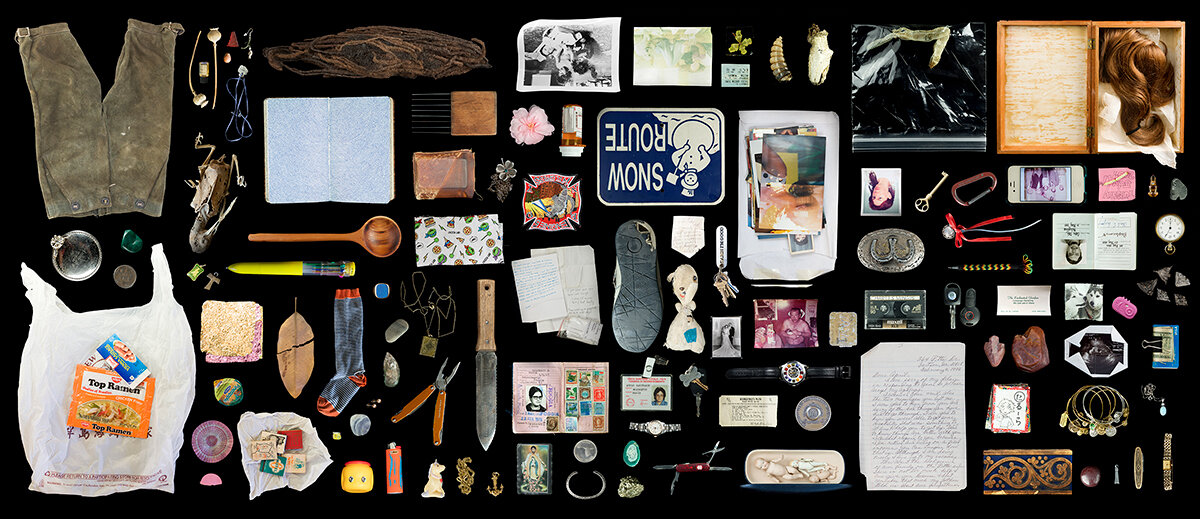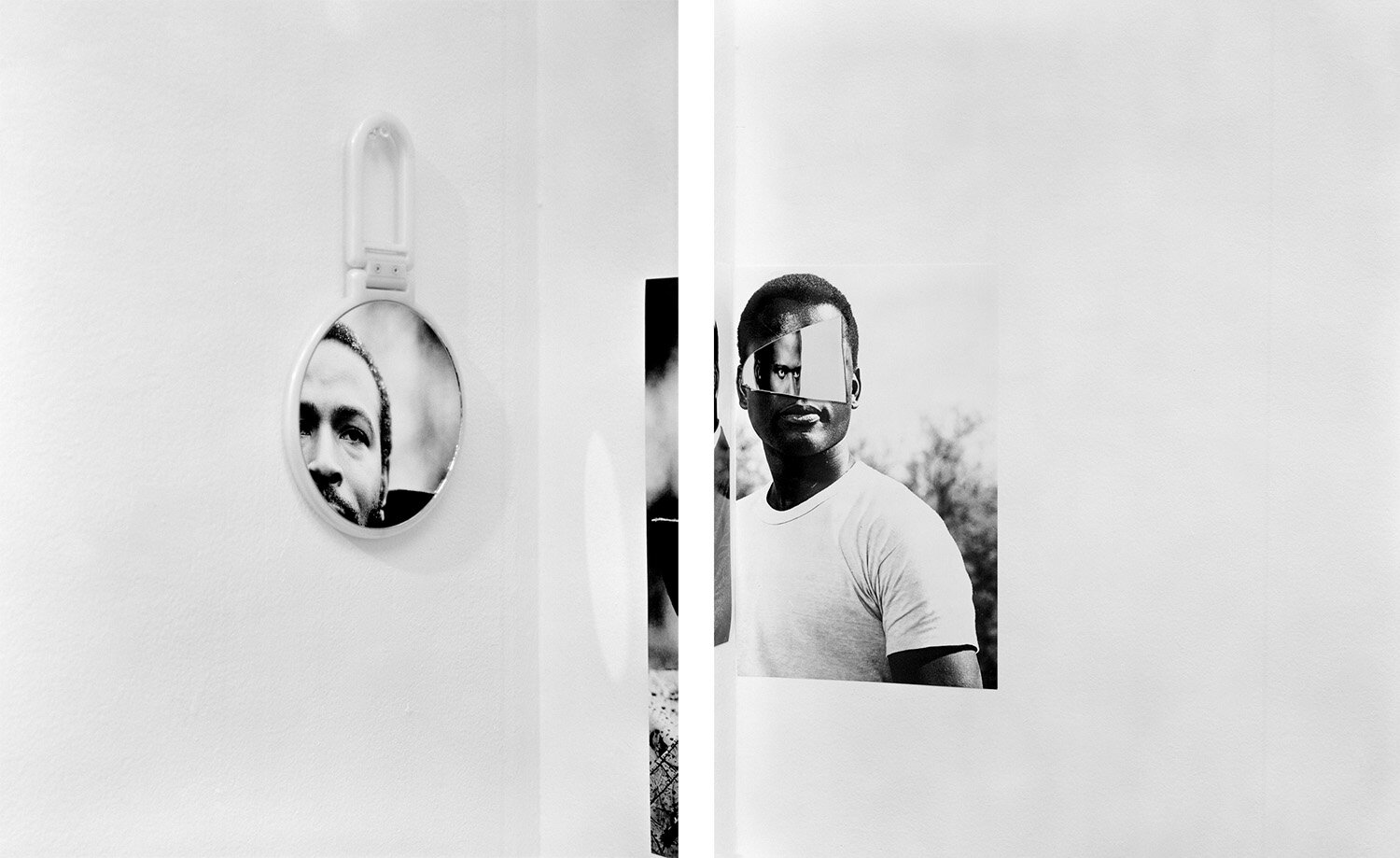For the past seven years, Aaron Turner has been making Black Alchemy. This photographic series and soon-to be-book published by Sleeper Studio uses still life, abstraction, appropriation, and occasional painting to reflect the complex historical representation of Black identity and culture.
Turner constructs sculptures and montages from photographs of historical Black figures, collections of images from Ebony Magazine, and his own family archive and re-photographs them with a 4x5 camera. His images are chaotic and filled with distortion – often as subtle codes intended for viewers to absorb, process, and attempt to decipher. Photographic paper curls, folds, and shimmers with reflection and reams of light and shadow. An image of Frederick Douglass repeats itself throughout the series – at times with softened focus, at others collaged jaggedly.
Many of Turner’s images use figures whose historical significance is important yet lesser-known. For example, “Looking at Drue King, 2018,” creates a folding montage of the 1943 yearbook photo of King, whose membership in the 1941 Harvard Glee Club sparked the desegregation of venues for college musical groups touring the South. Turner reimagines the photo as a three-dimensional object: photocopied, folded, and basked in light and shadow, giving new life to a pivotal, yet underreported figure in the history of desegregation. His process is, in a sense, an abstract shrine.
Other images devolve into full visual hallucination – they can be hard to focus on, know where to look, pulling you in while building on Turner’s interest in historical confusion. Ultimately, Turner’s gaze reforms how we understand history, the role images play in shaping it, the memories we hold to it, and the details we teach each generation forward.
There is a lot to soak through and it gets personal and layered in Turner’s family history.
Here we go:
Jon Feinstein in conversation with Aaron Turner





